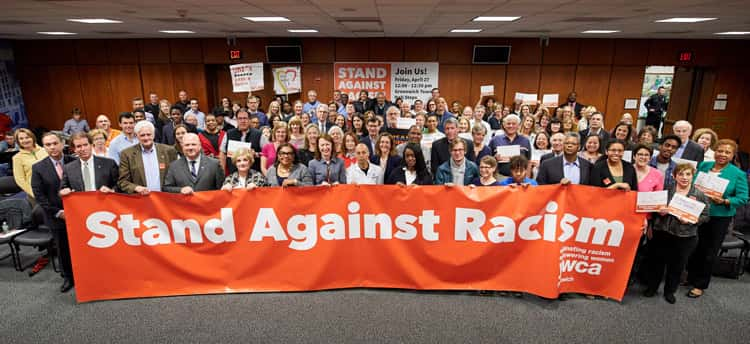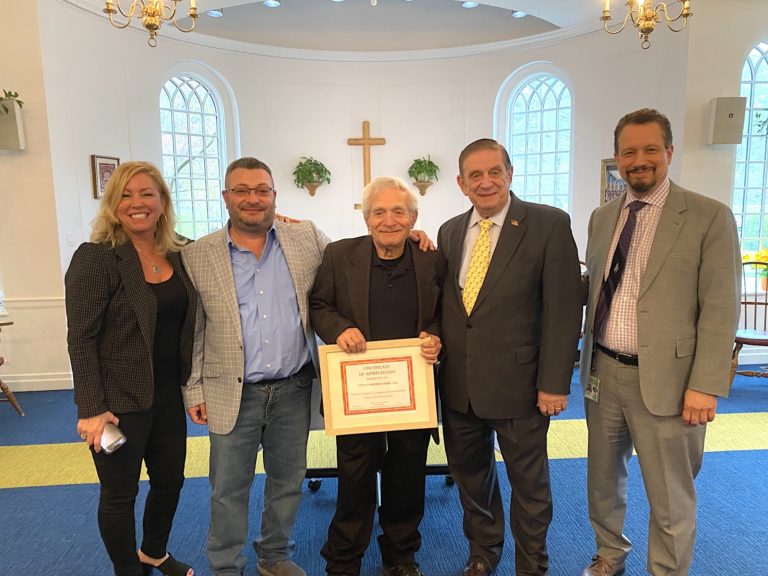

By Michelle Moskowitz
Sentinel Correspondent
According to the Center for Disease Control (CDC), 91 Americans die every day from an opioid overdose.
From 1999 to 2015, more than 183,000 people died in the United States from overdoses related to prescription opioids.
Today, overdoses are now the leading cause of death among Americans under 50.
In addition to the threat of overdose — misuse, abuse and addiction are a serious and life-threatening risk to potentially everyone.
But how do these alarming statistics serve as a catalyst for change?
One of Greenwich’s premiere leaders in the medical field is taking the lead in stopping this epidemic with a multi-pronged, scientific and reproducible approach – while at the same time, raising the bar within the healthcare industry.
ONS (Orthopaedic & Neurosurgery Specialists), the regions’ leader in orthopaedic and neurosurgery research and innovation, has developed a special Opioid Task Force whereby surgical-specific algorithms and programs will treat pain in a comprehensive, organized fashion to reduce the use of narcotics, (and/or eliminate them in certain surgeries) – while at the same time provide alternative, effective methods in managing one’s pain.
To date, ONS is comprised of 26 top-tier surgeons and specialists, trained at the finest institutions in the country — most who have undergone fellowship training at the country’s leading hospitals.
With specialty training in orthopedic surgery, neurosurgery, sports medicine and physical rehabilitation, ONS boasts three offices including Greenwich, Stamford and now Harrison, N.Y., where over 100,000 patients have been treated and cared for.
In order to leverage this vast, knowledge-base and collective expertise, in 2008 the group created the ONSF Foundation, a 501 (c)(3) for Clinical Research and Education, in alliance with Greenwich Hospital.
Since its inception, ONSF has produced award-winning, clinical research with an on-going mission to continually improve musculoskeletal care, educate the healthcare community on the latest trends and findings, as well as conduct community outreach programs – all designed to impact meaningful, long-lasting change on both a local and national level.
Each year, ONSF focuses on a topical, pressing issue and today the pervasive issue is opioids.
Approved by the Institutional Review Board at Greenwich Hospital, ONSF is utilizing its research capabilities in conjunction with its Arthroscopy, Surgical Skills and Biomechanical Research Laboratory to provide results-oriented programs that are already producing favorable results to reduce the usage of the drug.
ONS surgeon and President of ONSF, Dr. Paul Sethi, MD recalls how a few years back, he became very concerned after learning about the countless stories on opioid misuse.
These stories were so disturbing, he and the ONS team wanted to get at the root causes of the epidemic and explore best practices to stop it.
First and foremost, Sethi says that people must empower themselves and become informed — knowing the risks of drug misuse is key — not knowing necessarily who is at risk.
“The same way that a patient asks his/her doctor how many procedures have you performed, a patient should ask, do you consider any non-opioid modulations to help manage my pain?” says Sethi.
Today a consult with a patient goes a little bit differently.
“When any of our physicians explain the risks and benefits of surgery to a patient, they also must explain the risks and benefits of pain medication post-surgery, so that patients are fully informed and so that there are clear expectations.”
But in addition to upfront communication, Sethi outlines three fundamental mechanisms that his team has identified as substantially minimizes the usage of opioids, all while taking into account one’s pain tolerance.
“Surgery may be an inadvertent path to opioid exposure and dependence, with medication diversion as a primary risk,” said Sethi.
Medication diversion refers to the excess prescription pills that a patient does not utilize post-surgery, but may save for a rainy day.
Prior to the epidemic, many doctors might have prescribed enough pills that would last a patient through the weekend (say if a surgery was mid-week).
But it’s those unused pills that get stored in one’s medicine cabinet, and subsequently get picked up by someone else, whether it be a teenager, or a family friend.
When asked if this medication diversion was a large occurrence, Sethi replied vehemently, “Yes, there are three billion excess pills prescribed per year and this is where college kids and adults are getting this so-called ‘recreational medication’ from.”
Sethi urges patients to bring any unused medications to a designated drop-off box at the Greenwich Police Department, and not discard them into the sewage system or leave them lying around.
By pinpointing ‘medication diversion’ as a culprit for addiction and drug misuse, over the past two years, ONS has substantially reduced the number of prescribed opioids in order to prevent those pills from winding up in the hands of someone who is not under a doctor’s care.
“Physicians must limit one’s exposure to pain medications in the first place, as well as avoid any refills,” said Sethi
Sethi says its incumbent upon all physicians to responsibly manage a patient’s pain expectations as difficult as that might be.
For example, when a person may slip, fall and hurt their back, “it may actually be the better part of the medical practice not to give someone the stronger pain medication,” says Sethi.
He also is a strong advocate that doctors should delay opioid exposure (if administered at all) to patients among the teenage and collegiate population.
It has been reported that the younger a person is when first introduced to the drug, the more likely an addiction may occur — due to their developing brains.
In addition, Sethi outlines that physicians should try to limit any refills post-surgery in order to ‘prevent the path of misuse from beginning in the first place,’ – but to set those appropriate expectations with a patient upfront.
Multimodal Approach, Pain Remedies & Alternative Therapies
Finally, and perhaps the most groundbreaking of ONS’ three-tiered plan is that of its holistic approach to ‘vastly reducing the pain’ before it comes unmanageable.
“We are looking at pre-emptive pain medications such as the use of multiple, non-opioid medications on the day of surgery in order to blunt the amount of pain that a patient will experience post-surgery,” says Sethi.
“Within surgery, we are trying to address the pain at the central, systemic and local areas (called a multimodal approach) looking at all of the different generators of pain and extinguishing it from all angles,” says Sethi.
Other proven methodologies include the use of varied anti-inflammatories, different neuro-modulators, and the use of a long-lasting injectable of local Anesthesia (known as nerve blocks).
These long-lasting nerve blocks can now last up to 48 hours or more, depending on one’s metabolism (up significantly from the original blocks that lasted 8-12 hours.).
By the time a patient recovers and the ‘nerve block’ wears off, their threshold for pain is at a much lower level, thus minimizing one’s need for an opioid medication, if at all.
Sethi says these non-opioid medications are commercially available, most of which have been around for a long time.
They are also non-addictive forming, and all approved by the FDA — yet no one was really thinking about how to implement these methods.
Except for ONS that is.
While there are limitless papers documenting surgical techniques and best practices, Dr. Sethi admits that there are no published guidelines in the realm of pain management.
“We don’t have standardized protocols on how to treat someone’s pain from before and after a surgery, because pain historically, has been so subjective and the teaching on this has been insufficient,” says Sethi emphatically.
“We are way ahead on this,” says Sethi.
Utilizing some of these newer modalities, ONS recently conducted a study on patients who underwent a rotator cuff surgery, which they perform a lot of.
The results are impressive.
Physicians are already witnessing a 50% reduction in the amount of pain medication their patients are taking, because the pain they experience is far more tolerable.
When asked if there are certain patients that may be at a higher risk of opioid addiction than others?
“Everyone is at risk,” Sethi replied.
He also shared a recent finding identifying middle-age women as a high-risk group for addiction, although the study didn’t substantiate why.
But, he added, that an incoming patient, currently being treated for an anxiety disorder or depression, should be treated more delicately – requiring a collaboration with a patient’s internist in order to come up with a safe, comprehensive strategy prior to a surgical procedure.
Some additional alternative methods are also being utilized.
“Cryotherapy is (and has been) a standard part of our surgical practice. The majority of our patients are going home with their own Cryo unit,” says Sethi, which is an ice-cooling system used to decrease inflammation, reduce swelling and pain.
Other legalized, homeopathic treatments being used include Arnica and Turmeric, which Sethi says is just ‘a part of this pathway of opioid alternative modulators.’
Each year, ONS conducts a full-day seminar of Continuing Medical Educational (CME) where ONS takes the platform to share their advances and proven research — with more than 125 health care professionals in attendance.
This year’s annual event will take place on Nov. 18 at Greenwich Hospital where these game-changing initiatives to eradicate the opioid epidemic will be at the forefront.
Last Sunday, ONSF held a 5K Run/Walk to raise money for this important initiative, but donations can be made at any time at ONSF.org.
While Sethi’s daily calendar consists of every minute being accounted for, he generously spent 60 minutes about this important topic.
“We are trying to solve a problem and it’s a hard, uphill battle,” Sethi said. “But we care very much about this and our patients need to know what is best for minimizing their risks.”
Visit Onsmd.com or call (203) 869-1145 for more information.




